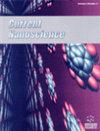利用增强型生物质吸附材料进行重金属吸附去除的批量和优化研究的成果与难点
IF 1.5
4区 材料科学
Q4 BIOTECHNOLOGY & APPLIED MICROBIOLOGY
引用次数: 0
摘要
:表面增强技术可改善生物质材料的多孔性和表面积(SSA),从而提高其吸附能力。本研究探讨了生物质材料表面改性技术在吸附重金属(包括水/废水中的铅、砷、铬、铁、镉、锰、铜、钴、汞、镍、锌及其离子)方面的最新进展。结合各种表面改性方法及其对吸附过程的影响,研究了生物质的化学结构和表面特性。此外,我们还利用各种操作条件、等温线、动力学以及计算和人工智能方法对吸附性能进行了评估。研究发现,酸活化的 Posidonia oceanica 对 Pb2+ 的吸附效力最高,达到 631.13 mg/g,而 H3PO4/炉改性的油棕生物质对 Cd2+ 的吸附效力最低(0.1576 mg/g)。强调了为提高该领域的吸附性能而改变这些材料的知识差距方面的重要见解。本文章由计算机程序翻译,如有差异,请以英文原文为准。
Achievements and Difficulties with Batch and Optimization Investigations of Heavy Metal Adsorptive Removal Utilizing Enhanced Biomass-based Adsorption Materials
: Surface enhancement improves the porousness and surface area (SSA) of biomass materials, which boosts their adsorption capability. This work investigates recent advances in surface modification technologies of biomass-based materials for heavy metal adsorption, including Pb, As, Cr, Fe, Cd, Mn, Cu, Co, Hg, Ni, Zn, and their ions in waters/wastewaters. The chemical structure and surface properties of biomass were examined in connection with various surface modification approaches and their effects on the adsorption process. In addition, adsorption performance we assessed using various operating conditions, isotherms, kinetics, and computational and artificial intelligence methodologies. This study found that acid-activated Posidonia oceanica had the highest adsorption effectiveness of 631.13 mg/g to eliminate Pb2+, whereas H3PO4/furnace-modified oil palm biomass had the lowest (0.1576 mg/g) for removing Cd2+. Important insights into knowledge gaps for changing these materials for extremely effective adsorption performance were emphasized to improve the area.
求助全文
通过发布文献求助,成功后即可免费获取论文全文。
去求助
来源期刊

Current Nanoscience
工程技术-材料科学:综合
CiteScore
3.50
自引率
6.70%
发文量
83
审稿时长
4.4 months
期刊介绍:
Current Nanoscience publishes (a) Authoritative/Mini Reviews, and (b) Original Research and Highlights written by experts covering the most recent advances in nanoscience and nanotechnology. All aspects of the field are represented including nano-structures, nano-bubbles, nano-droplets and nanofluids. Applications of nanoscience in physics, material science, chemistry, synthesis, environmental science, electronics, biomedical nanotechnology, biomedical engineering, biotechnology, medicine and pharmaceuticals are also covered. The journal is essential to all researches involved in nanoscience and its applied and fundamental areas of science, chemistry, physics, material science, engineering and medicine.
Current Nanoscience also welcomes submissions on the following topics of Nanoscience and Nanotechnology:
Nanoelectronics and photonics
Advanced Nanomaterials
Nanofabrication and measurement
Nanobiotechnology and nanomedicine
Nanotechnology for energy
Sensors and actuator
Computational nanoscience and technology.
 求助内容:
求助内容: 应助结果提醒方式:
应助结果提醒方式:


